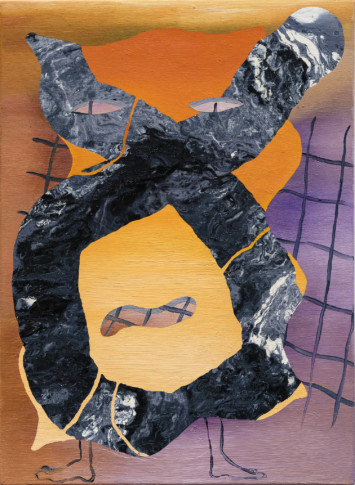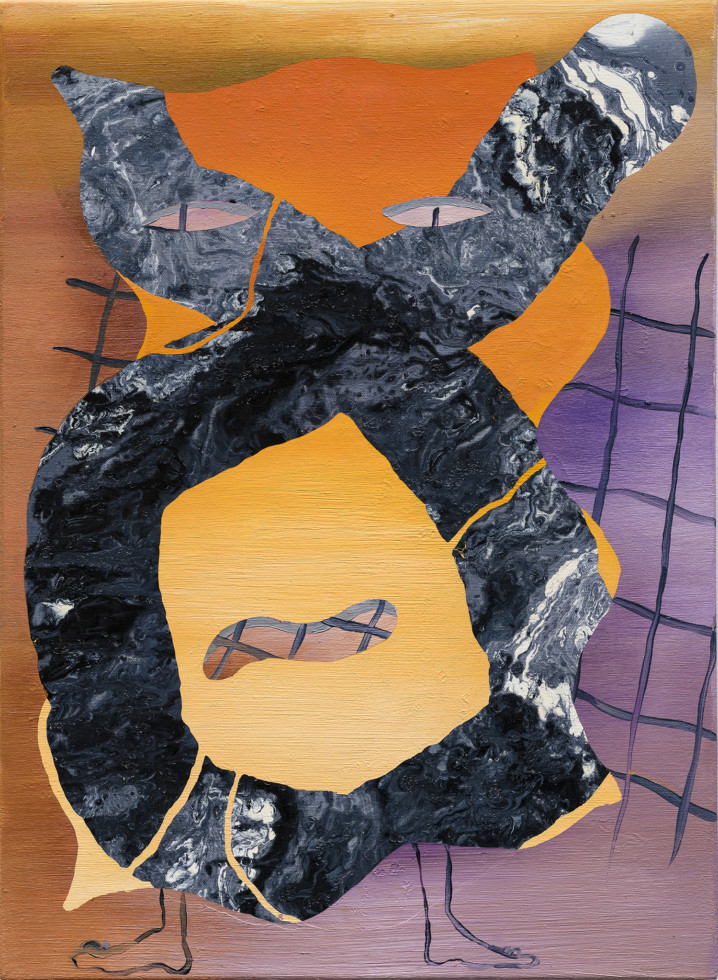
Merike Estna, The emptiness of the empty eyes, 2019 © image courtesy of Merike Estna studio
Merike Estna: Ghost of the future, filled with memories of past.
Merike Estna has long discussed and probed the notion and act of painting. Her painting could be understood as a living medium, a performative painting in which both time and process accumulate and communicate a form of activity, and further, as instructions for performances and creators of situations. Estna’s work combines an abstract style that seems to be taken from our digital era with subject matters from both mythological and political narratives, and the painting expands beyond frames and canvases. The paintings take over both the exhibition space and the human body, and at times the works function as props or objects and take on the semblance of furniture or wearable items of clothing. Through social and performative elements, the viewers are invited to a mutual, sometimes subtle, participation.
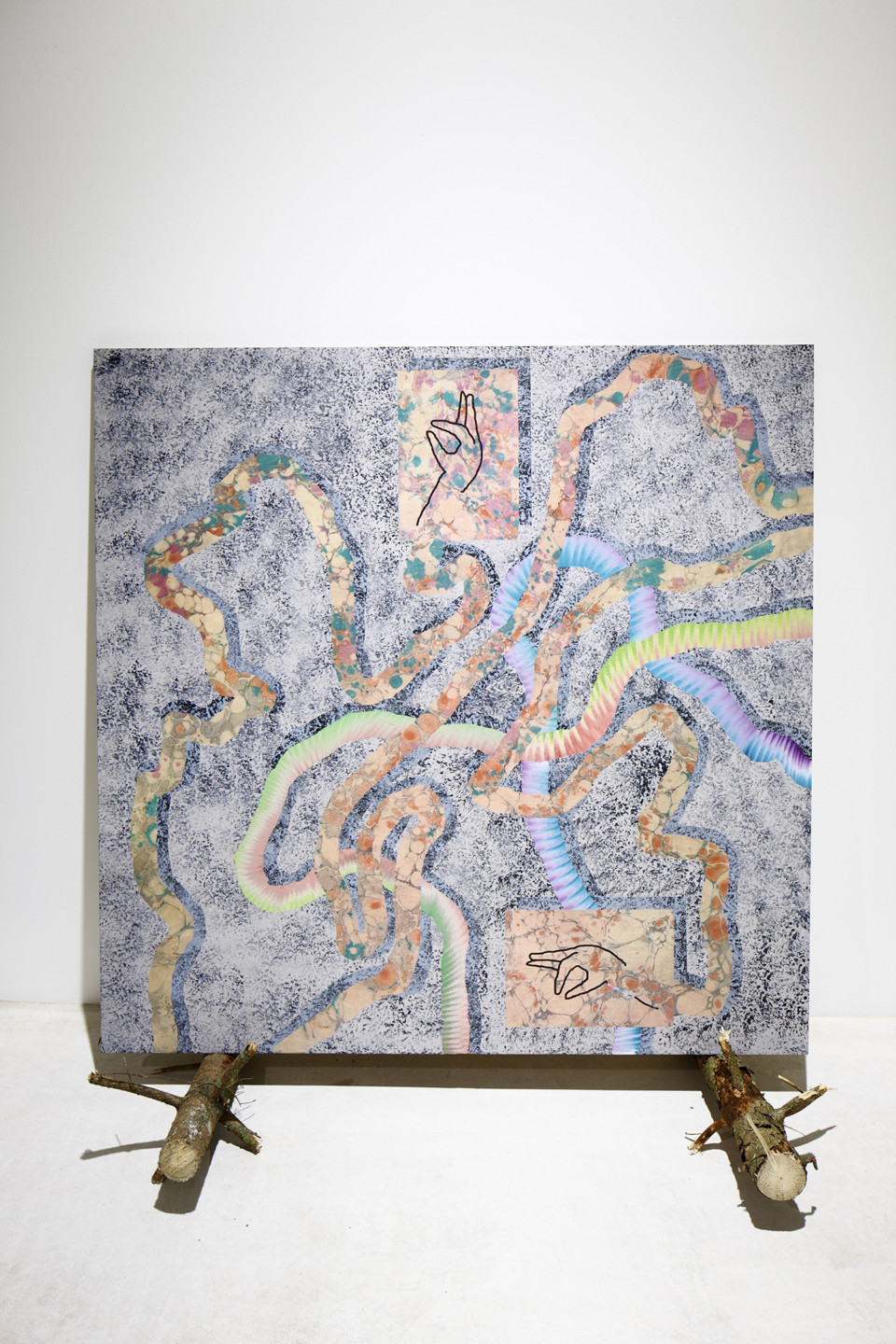
The exhibition “Ghost of the future, filled with memories of past” combines works from recent years with newly produced artworks and is presented in two exhibition spaces at Moderna Museet Malmö. One room is dominated by the installation “Tree trunks, serpents and other animals” (2017–18) which consists of a number of paintings placed horizontally on sawn-off tree trunks that function as tables and benches, and becomes a social gathering place.
“Tree trunks, serpents and other animals” is partially inspired by the Slavic folk tales about Baba Yaga – a supernatural being that is often interpreted as an ambiguous and mysterious character. She is at once frightening, helpful and motherly. Merike Estna herself has stated that she sees the references to folk tales and witchcraft from a feminist perspective, showing how strong, insightful and knowledgeable women were judged by their times. According to the tales, Baba Yaga’s house stands on chicken legs, deep in the forest, and the installation creates a link to this image through the placement of the paintings on the tree trunks. The painted hands that point in different directions, forming a thumbs-up or balled into a fist as if in protest, are more contemporary allusions in the installation. These motifs are recognisable from a digital symbolic language but are also both timeless and ambiguous. Ideas related to topical environmental discussions can also be traced in the work, not least through specific choices of material, such as beeswax and the sawn-off tree trunks.
In the same room as “Tree trunks, serpents and other animals” a number of new large-scale paintings specially produced for the exhibition space is installed. The four new paintings bear the unifying title “Ocean of endangered times” (all 2019), and here the prehistoric jellyfish emerges in an intense flow of colours, adding layers of dream and threatening doom to the scenario.
Snakes, as well as flies and ticks, are recurring motifs in the work of Merike Estna. In a number of cultures and religions, the snake symbolises evil, but with its ability to slough off its skin it is at the same time a reminder of rebirth. In passing, the artist also mentions that, according to Estonian mythology, the souls of the dead can live on in snakes. In their smallness, flies and ticks can here be seen as the bearers and spreaders of both bacteria and biological and virtual viruses. Apart from a large number of hand-painted, glazed tiles and ceramic objects placed on the floor, the installation “An egg, a larva, a nymph” (2018) also consists of performative elements, often performed by the Lithuanian artist and dancer Andrius Mulokas. It becomes clear how the small insects spread, not just over the floor and the ceramic objects, but even over the actor’s naked body. The use of a living male body also works as a way of redirecting the viewer’s perspective and gaze, of opening up for art-historical and cultural discussions about the relationship between the subject and the object. Here, both the actor and viewer become integrated parts of the painterly work.
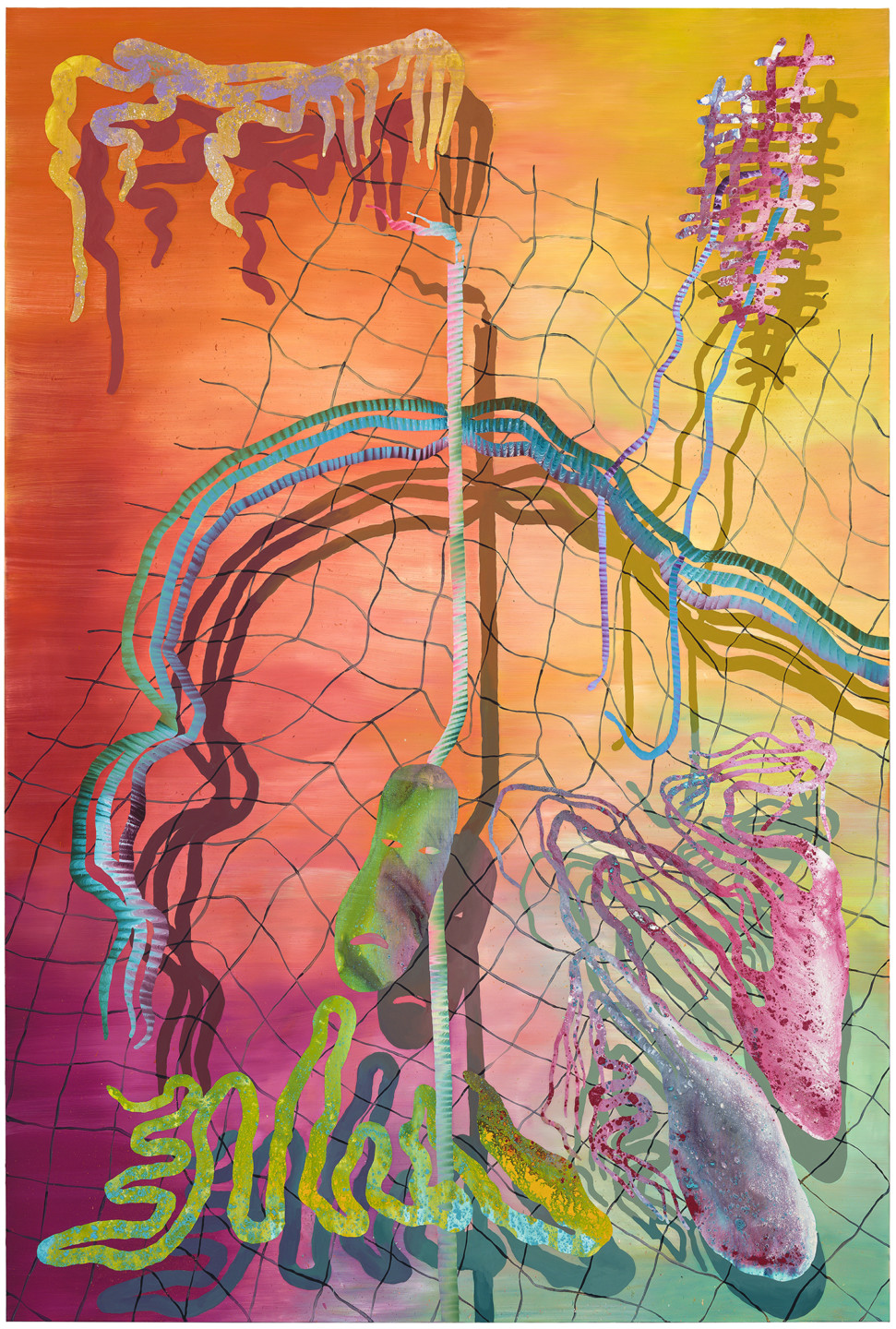
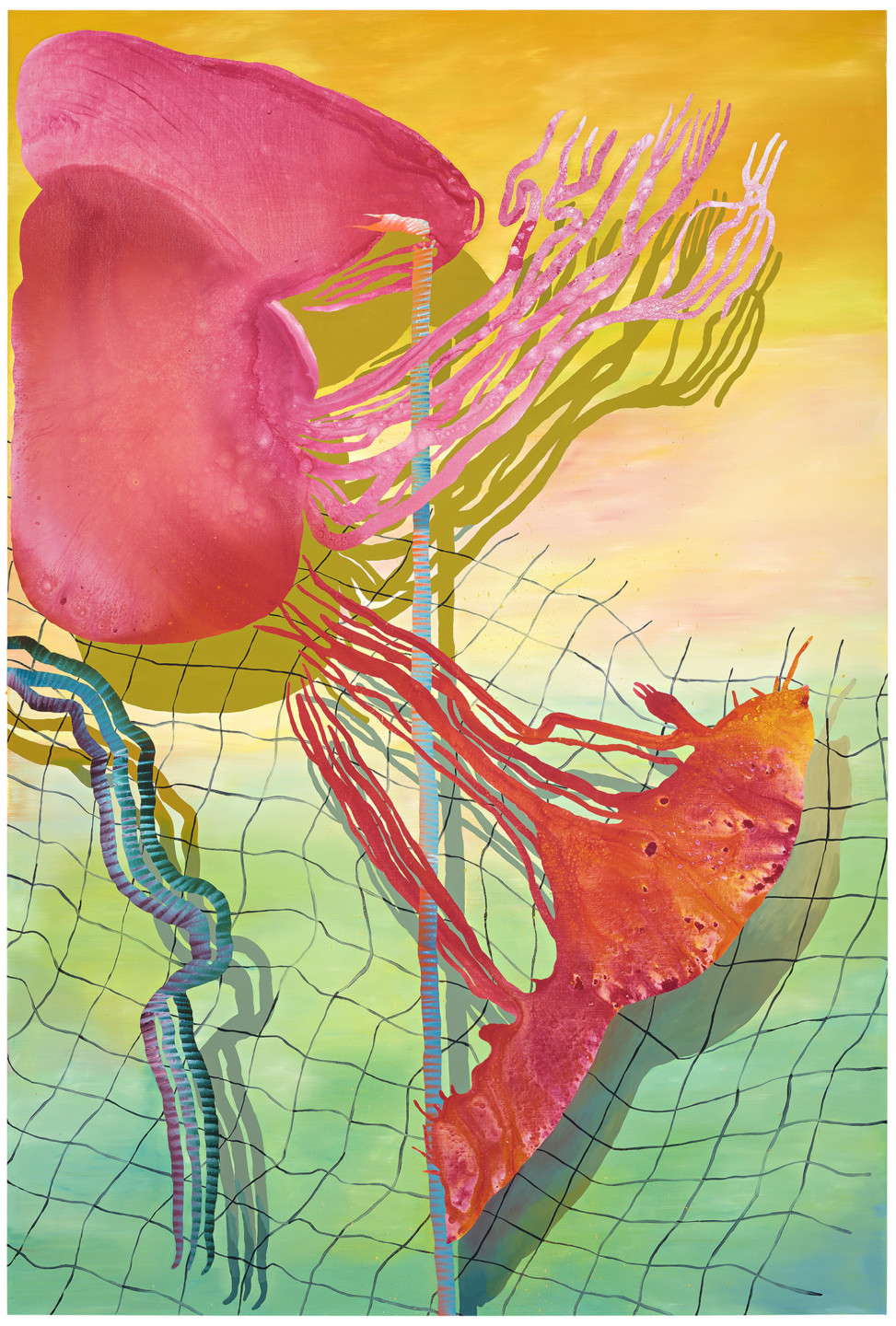
For the exhibition at Moderna Museet Malmö, the three-dimensional work “Ghost of the future, filled with memories of past” (2019), and a soundtrack, have been added to the spatial installation.
Merike Estna’s constant exploration of painting as a creative act and expressive form reveals both a critical conceptual stance and deep respect for the craft. Further, the artist also incorporates other traditional handicraft techniques, such as ceramics, in her installations. The ceramic urn-like objects that are sporadically placed around the exhibition space, resemble both contemporary art objects and baffling historical artefacts. The vessels practically force the viewer to act and navigate through the room and (just like the male actor) dissolve the relationship and distinction between object and subject. In Estna’s work, through an almost animist practice, a subjective, mutual influence and communication arises between two parties. The artist’s choice of subject matter, work process and material lead the viewer’s understanding and interpretation in several directions that encompass philosophical, political and personal dimensions, often with the help of open, poetical titles.
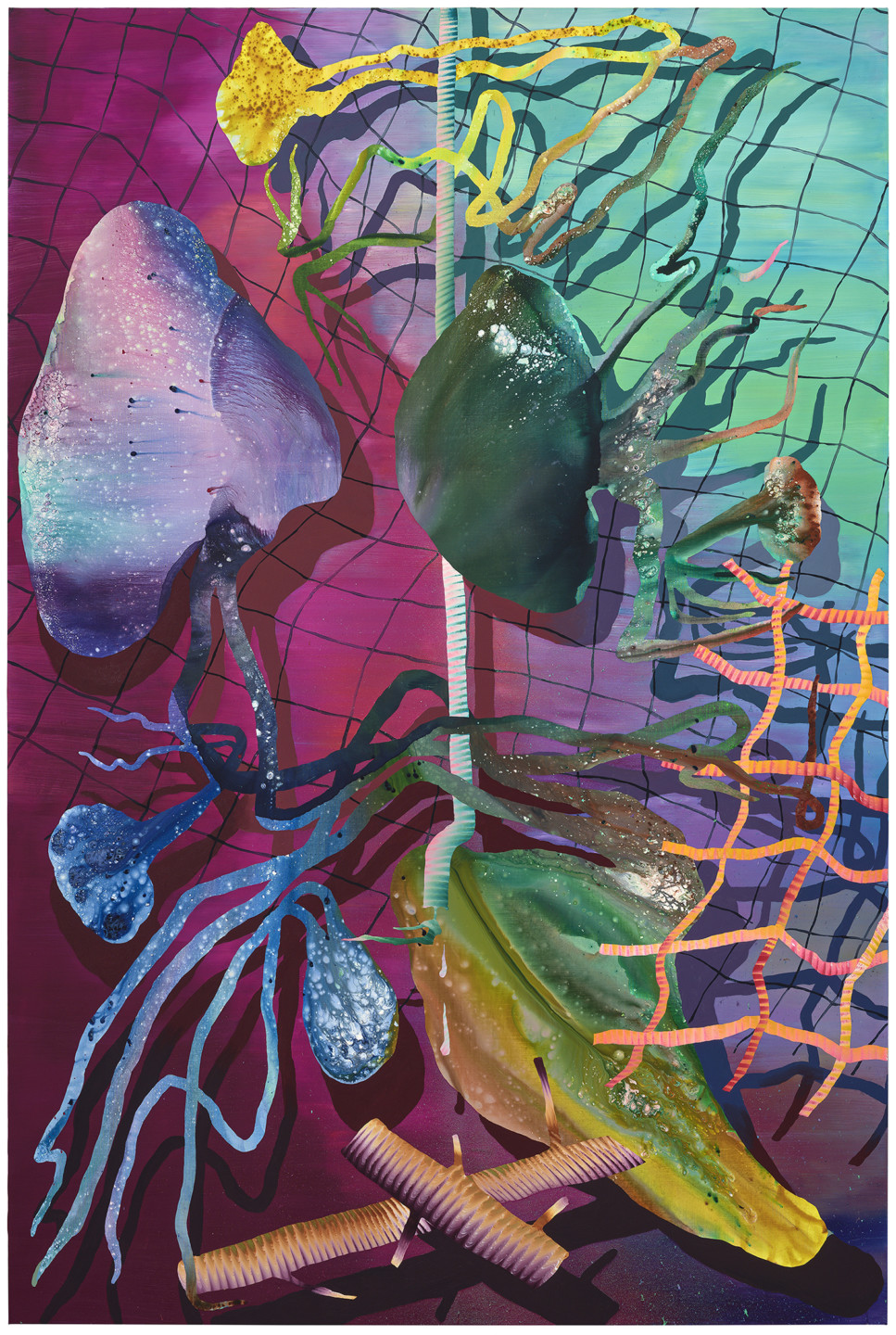
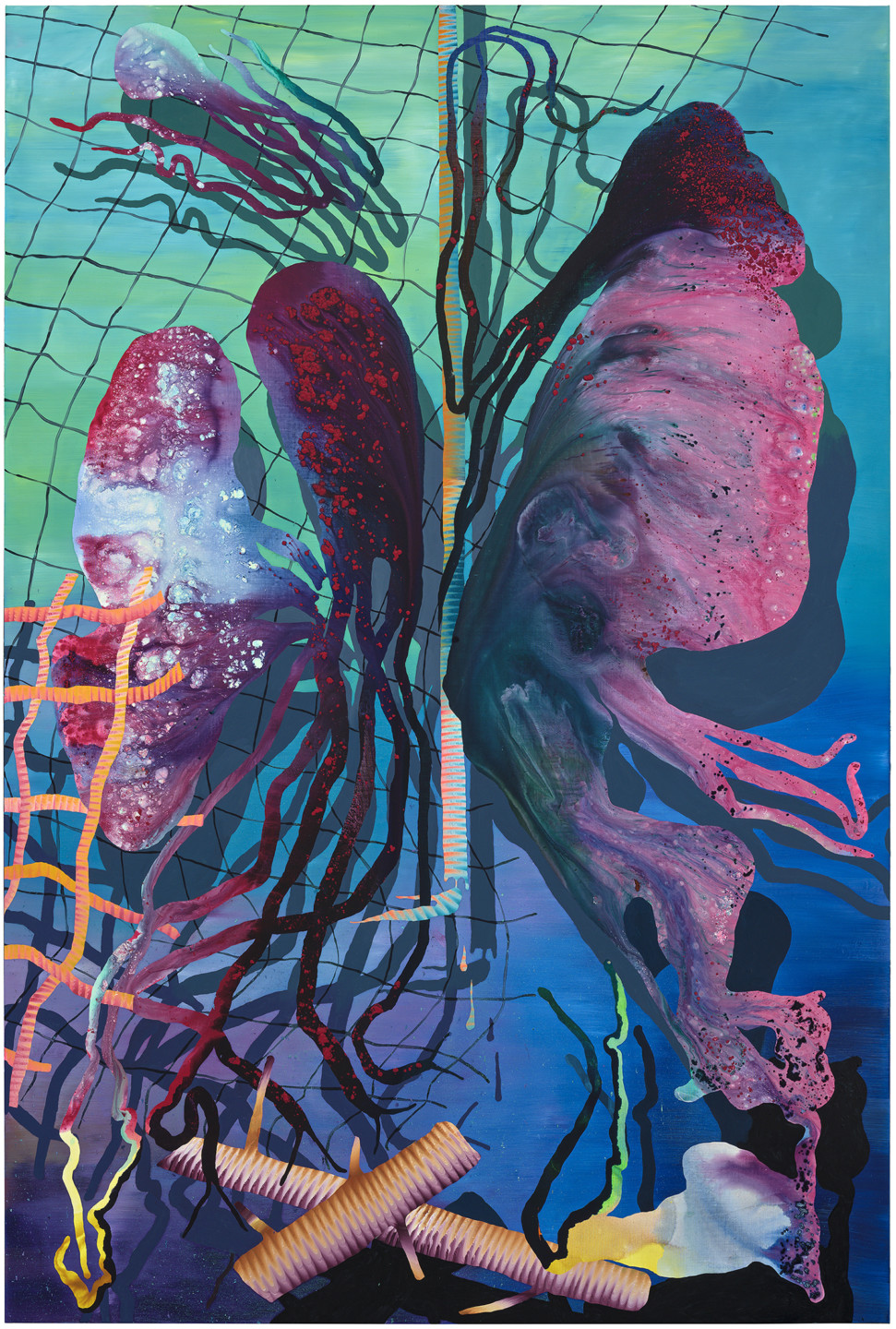
In Merike Estna’s artistic practice, painting becomes a living, fluid substance that can take on any given form. The spiritual and the material is brought together in her work and myth and history meet an uncertain actual future. Questions regarding historical change and development are extracted from this, which also brings to mind the artist’s background, having grown up in Estonia, one of the Baltic states – a region that has undergone great political change in a short period of time after the collapse of the former Soviet Union. Estna’s installations, created using time-consuming techniques, may be experienced as spaces of recuperation, imagination and social gatherings that are at once fragile, spontaneous and hopeful. Her artworks, be they ceramic objects, paintings on canvas or performative elements, function as bearers of something greater, something elusive and charged. It seems to be as much about the specific medium in itself, as the attitude and freedom that pervades both the process and the social structures that come out of it.
Andreas Nilsson, curator.

